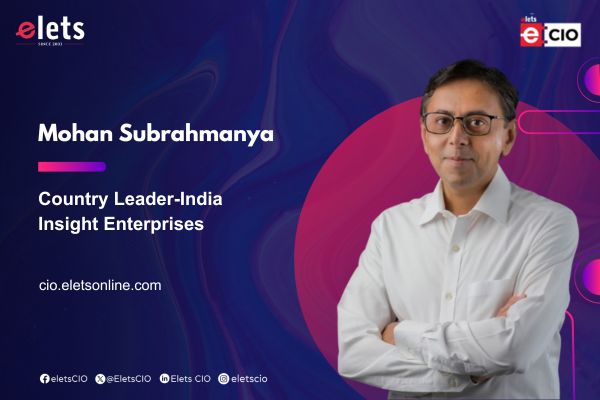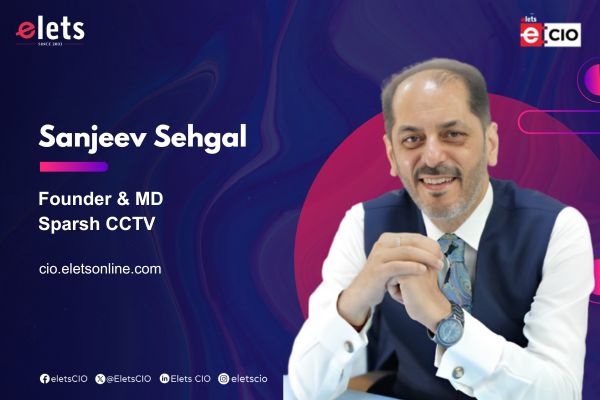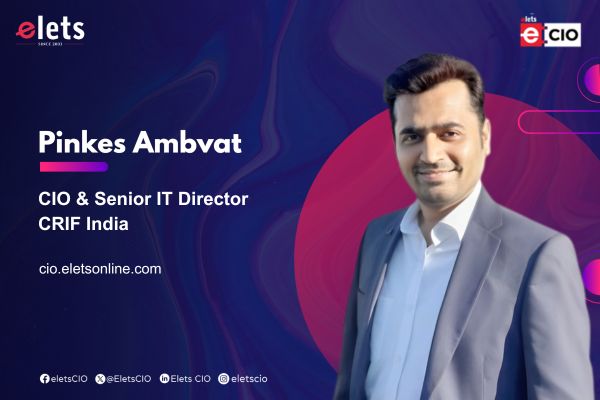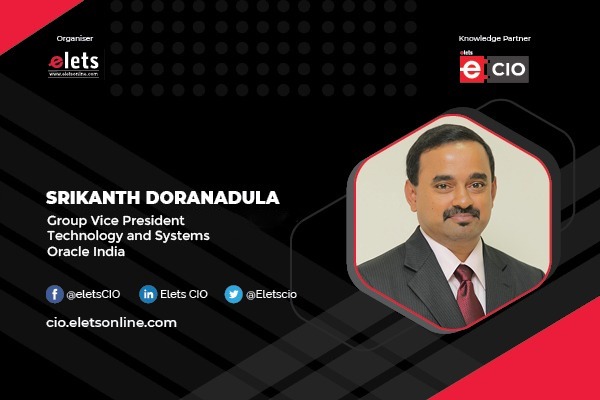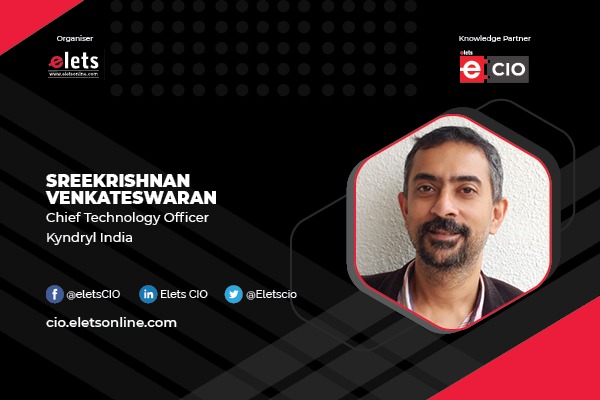
Exploring the dynamic intersection of technology and data science within the travel industry, Dr. Shakti Goel, Chief Architect and Data Scientist at Yatra Online, shares profound insights on driving innovation and personalised customer experiences. Speaking with Kaanchi Chawla of Elets News Network, he sheds light on Yatra’s innovative strategies to harness the power of Generative AI and Large Language Models. By emphasizing the importance of a collaborative, data-driven approach, Shakti articulates how Yatra is setting new benchmarks in creating value for customers, making this interaction a fascinating glimpse into the future of travel technology.
As the Chief Architect and Data Scientist at Yatra Online, how do you balance the dual responsibilities of guiding the company’s technological architecture and leading its data science initiatives?
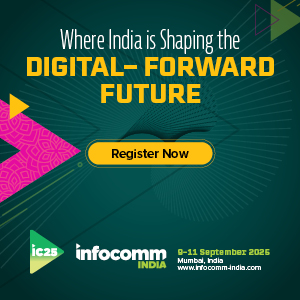
I have experience leading technology, product, and data teams, and have worked on multiple projects simultaneously. My doctoral research and career have largely focused on the fields of data science and data analytics. Data science previously fell under the broader realm of technology, but it is now emerging as a separate discipline. The fundamentals behind technology and data projects largely remain the same – there is product ideation followed by design, development, quality check, and production deployment. While the focus in technology projects is often on the number of lines of code, in data analytics projects, the emphasis shifts to the volume of data and the number of reports. In other words, software, technical architecture, and data sciences are inseparable fields of technology.

At Yatra, I work very closely with Mr. Manish Amin (CTO and Co-Founder of Yatra), which helps me align with technology and data science initiatives. Whenever we architect a new product, data science and analytics are integral to the product. Software developers, data engineers, and data scientists work in a close-knit team. Product and business analysts not only liaise with the business team but are also responsible for the effective transfer of ideas and communication between the software and data professionals. To highlight how technical architecture and data sciences come together, I would like to give an example of the product called Expense Management Solution we recently developed to allow employees to submit expenses for reimbursement. The product itself has been developed using a popular scalable framework enabling faster development. Expense receipts are analyzed using Large Language Models, viz., OpenAI and Gemini. Data analytics is facilitated using multi-dimensional OLAP that allows users to slice and dice data. People with skill sets in Machine Learning and software development worked very closely as a team to take the project to successful completion.

This collaborative approach underscores the inseparable nature of software development and data science in creating innovative solutions that meet our business needs and enhance user experiences.
Considering the rapid evolution of AI and machine learning technologies, how does Yatra Online’s vision advance these advancements to create highly personalized travel experiences for its customers? Could you elaborate on potential new areas or services that might be in the pipeline?
Yatra Online operates in the B2C, B2B, and Corporate travel (B2E) spaces. We are the leading travel solution provider in corporate travel. We emphasize a highly personalized travel experience by analyzing historical searches and booking data and relating them to the customer’s preference. In the B2B and B2E businesses, customers form a captive base and make repeat bookings for the same hotels. Web click data shows the level of interest the customer has in a given property, and booking data confirms the highest degree of interest in the property. By using algorithms such as Collaborative Filtering and Hierarchical Recurrent Neural Networks (HRNN), we display the properties most likely to be booked on the first page of search results. As a result, customers spend less time on the portal to make a booking. We are also working on projects centered around Generative AI. A user can cancel a flight booking by talking to the voice bot and mentioning the PNR number or flight details. Third-party APIs are activated using Large Language Models, an approach that has never been done before in our sector. Similarly, we are also working on creating AI agents that will respond to user queries using Retrieval Augmented Generative AI. We have plenty of ideas, and now we have to make sure that, as we move from concepts to implementation, we achieve immediate and effective application.
The travel industry is highly competitive and constantly evolving. Can you share an example of how Yatra Online has used technology or data science to create a unique value proposition for its customers?
Yatra Online was one of the first companies to introduce technology to the travel world in India. We have developed a highly modular and service-based architecture that connects many facets of the booking process. Deploying services on different servers using Kubernetes and adhering to the tenets of IT General Control (ITGC) makes our solution robust, scalable, and highly performant. By developing a plug-and-play architecture, we can now develop new products and easily add them to the existing stack. Large amounts of data are generated during searches and when bookings are made. Using this data, we have developed analytical dashboards that are shared with our corporate clients. This differentiation sets Yatra apart from its competitors.
What do you see as the next big trend in the intersection of technology, data science, and travel? How is Yatra Online preparing to be at the forefront of this trend?
I would say that the advent of GenAI and LLMs will be a game-changer for travel space. From a technology standpoint, I would imagine that faster GPUs and TPUs with hundreds of billions of transistors will be developed (for reference, the H100, a base-level GPU from Nvidia, has 80 billion transistors). Nvidia is now coming out with supercomputers for AI and Machine Learning, which will be available for companies to purchase. LLMs trained in only one subject area, unlike multi-modal LLMs such as OpenAI models, will start setting the benchmark for super AI. This technology will surpass human intelligence. VR technology is also advancing significantly, allowing travelers to virtually experience the places they plan to visit. While Yatra is not in the hardware technology space, it is very much realizing the benefits of GenAI technology. We are using LLMs for the analysis of receipts and developing voice-bots that can serve customers at a personal level. Our internal and external customers continue to crave data and insights. We are investing in data analytics projects and developing a Customer Data Platform that is supported by an Enterprise-wide Data Warehouse. We are exploring newer technologies such as vector databases and even thinking of having our own LLM, of course, cost permitting!
Leading a tech team, especially in a dynamic field like travel, comes with its challenges. What is your leadership style, and how do you inspire innovation within your team?
I like to lead by example. I consider myself a very hands-on software developer who does not shy away from writing code even after being two and a half decades in the industry and while currently fulfilling CXO responsibilities. This allows the team to see me as one of them. I enjoy spending time with the fresh entrants but, instead of spoon-feeding them, I like to leave them with a challenging problem to solve. Of course, they make mistakes, lots of them, but they also learn from these mistakes. This inspires them to learn more about technology. Regular brainstorming sessions with the senior staff allow us to come up with new ideas and different ways of doing things. Many times, I ask the team to work on projects that are purely academic but use newer technologies. These projects, though providing no immediate tangible benefits to the company, continue to keep the team motivated and inspire innovation. I assess team members on whether the work assigned to them was completed on time and within budget, and if any bugs were encountered when the project was moved to production. These two simple metrics guarantee objectivity in assessment and high quality of work delivery.
ChatGPT and GenAI LLMs have become very popular in the last few months. Did the revolution take place overnight? What factors contributed to LLMs becoming a reality?
To understand the Generative AI (GenAI) revolution, we need to examine the evolution of ML and AI technology. The perceptron, a basic unit of neural networks, was introduced in the late 1950s by Frank Rosenblatt. This was followed by the introduction of Recurrent Neural Networks (RNNs) in the 1980s, and Long-Short Term Memory (LSTM) models in the late 1990s. Generative Adversarial Networks (GANs), the ML algorithm behind deepfakes, were proposed around 2012-2013. Finally, the Transformer model, crucial for training Large Language Models (LLMs), was utilized in 2017-2018. It has taken nearly eight decades to reach our current state since the inception of the perceptron! While human intellect, mathematics, and algorithms were always in abundance, what we lacked was sufficient data storage capacity and computational power. Pentium chips, introduced by Intel in the early 1990s, contained 3 million transistors, a significant increase from the 1 million transistors in their precursor, the 80486. Today, we have Nvidia’s H100 Tensor Processing Unit (TPU) that houses 80 billion transistors. Previously, disk space would cost around USD 50 per gigabyte (GB), and a 1 TB Unix hard disk could cost around USD 200,000. Massively Parallel Processor (MPP) servers would easily cost a few million dollars. Now, 2 TB external hard disks are available for USD 40-50, and solid-state disks (SSDs) are similarly affordable. Data transfer speeds over networks have increased from 14.4 kilobits per second to over 1 GB per second, facilitating the transfer of petabytes of data. The ready availability of cloud servers and Machine Learning APIs has simplified the training and deployment of ML projects.
Beyond hardware and computational advancements, the role of social media in promoting the GenAI revolution is undeniable. News related to advancements in ML, such as deepfake technologies or lifelike videos generated by OpenAI, quickly go viral. Even residents of smaller cities and towns become aware of and interested in learning more about GenAI technology. Large corporations like Google, Microsoft, Amazon, IBM, and Nvidia are investing billions of dollars in GenAI promotion—a practice that was virtually nonexistent two decades ago. Conferences organized by organizations like Elets play a crucial role in promoting GenAI by facilitating the exchange of ideas among industry peers. Such gatherings have evolved from being primarily academic discussions to dynamic forums for sharing advancements and innovations. This progression in technology, hardware, financial investment, and social interaction has collectively propelled the GenAI revolution.
Looking ahead, where do you see Yatra Online in the next five years, and what role will technology and data science play in getting it there?
In the next five years, I see Yatra Online continuing to be a dominant force in the travel space with many more products brought to the forefront. Yatra will not only become a data-centric company but also a data-driven one. Business decisions will be made largely based on data, and quite a few of these decisions will be automated. The adoption of GenAI technologies will help reduce mundane work, resulting in the improvement of overall efficiency. A lot of technology development, such as code writing, will be done by GenAI-driven bots. There should be a significant change in how we provide customer service. I expect Yatra’s culture to evolve into one where data becomes the official language.
Be a part of Elets Collaborative Initiatives. Join Us for Upcoming Events and explore business opportunities. Like us on Facebook , connect with us on LinkedIn and follow us on Twitter.
"Exciting news! Elets technomedia is now on WhatsApp Channels Subscribe today by clicking the link and stay updated with the latest insights!" Click here!


